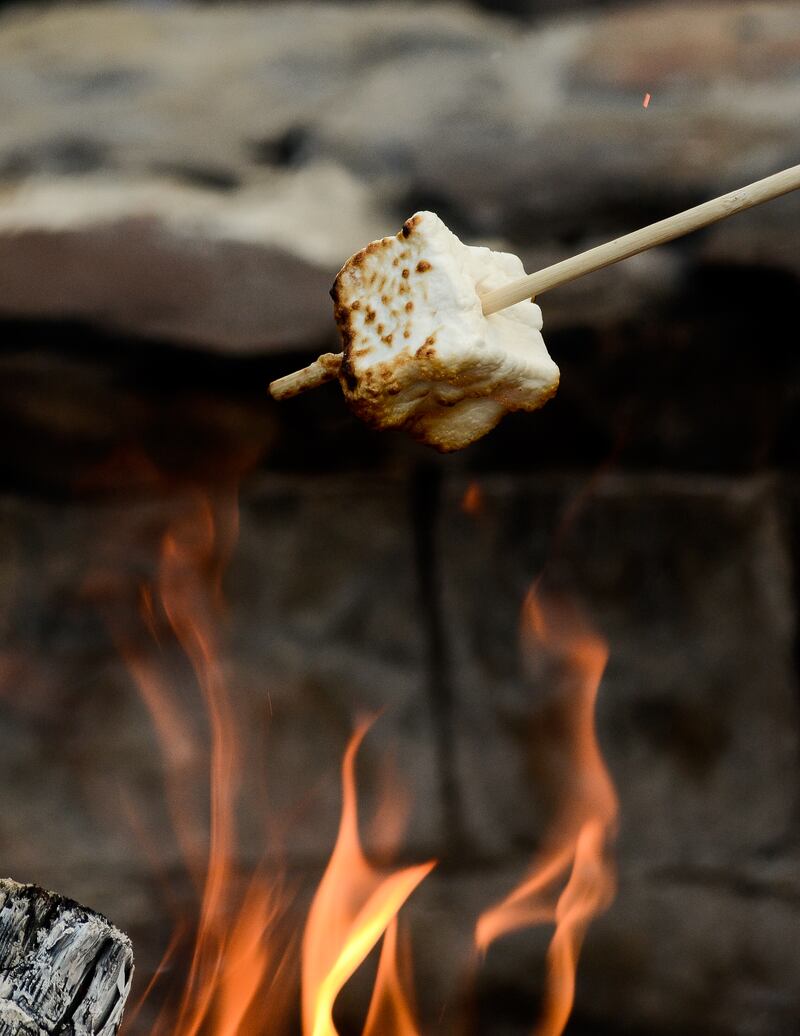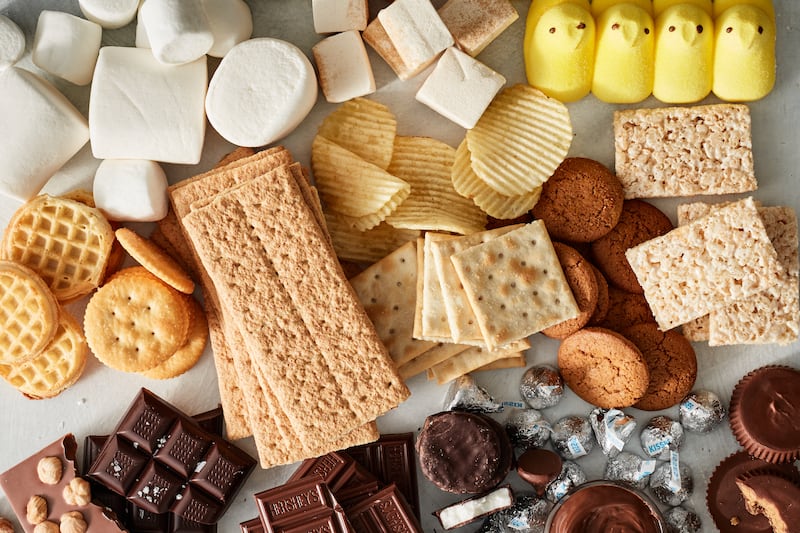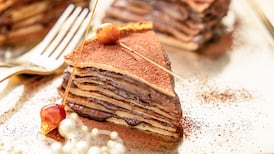the campfire s’more is a gooey mess: saccharine, certainly, but also sentimental, stuffed with childhood memories.
“When you get older, you still love them,” says Kena Peay, a cook who shares her hiking and camping recipes on social media. “But then you’re like, ‘Uh, this kinda could be improved’.”
Beloved for its simplicity, a s’more is best known as a roasted marshmallow and a piece of bar chocolate sandwiched between graham crackers. But, really, the perfect campfire s’more is one you enjoy. For some, that can be a roasted Peep with a Reese’s cup tucked into two gingersnap cookies. The potential for customisation is endless.
The s’more’s origins are as hard to pin down as its oozing centre. The first published recipe is often attributed to the 1927 guidebook “Tramping and Trailing With the Girl Scouts,” where it appears under the name “Some More”. But a similar recipe for “Campfire Marshmallow Graham Cracker Sandwich” from the marshmallow brand Campfire can be found in a recipe leaflet that Michigan State University in the US dates to 1924. And a year later, The Norwalk Hour newspaper wrote of the introduction of “some-mores” to Girl Scouts at Camp Andree, about 30 miles north of New York City.

Roasting marshmallows around a fire had, by then, long been fashionable (the confection became commercially available in the US in the early 1900s). “Marshmallow parties are coming into favour,” The New York Times reported on July 6th, 1902, adding that partygoers would “build fires and toast marshmallows, and occasionally, it is said, burn their fingers”.
Around a wood-burning fire, preparations vary from camper to camper. According to Lauren Reichstein, manager of camp and adventure programs for the Girl Scouts of Middle Tennessee, the ultimate s’more starts with not one, but two marshmallows. (You could, of course, opt for a single jumbo marshmallow instead.)
To Megan McDuffie, who runs the camp-cooking blog Fresh Off the Grid with Michael van Vliet, the key to the perfect s’more is all in slow roasting. They believe that toasting a marshmallow should be an exercise in patience.
But chef and former scout Greg Baxtrom just goes for it. “Despite my rigid culinary profession, I am more of a ‘Just stick it in the fire until it burns and blow it out’ kind of guy,” he says.

At his restaurant, the toastiness of the marshmallow is up to customers, as they’re equipped with coffee cans of coals for tableside roasting. Baxtrom’s s’mores kits feature what he calls “cheffy graham crackers” and “cheffy marshmallows,” but he says his customers have drawn the line at the chocolate, preferring Hershey’s bars over any confections made in-house.
Still, if you wouldn’t happily nibble on the Hershey’s chocolate, skip it. Reach for what you enjoy, even if that’s chocolate with nuts – but especially if that’s chocolate sprinkled with sea salt. Or forgo the bar chocolate altogether.
“It never fully, completely melts, which drives me absolutely nuts,” Peay says of bar chocolate. She’s experimented with Hershey’s Kisses, finding that they succumb to the marshmallow’s residual heat better than bar chocolate does, but ultimately prefers to spread Nutella on to her graham cracker for even distribution.
The graham cracker needs all the help it can get, after all.

By design, graham crackers don’t provide much in the flavour department, serving simply as sugar shuttles to hungry mouths. So consider a base like a saltine or a Ritz, which can keep the s’more out of cloying territory, countering all that sweetness with a touch of saltiness. And for real salt fiends, there’s Dan Whalen’s preferred base: a ruffled potato chip.
“Sometimes graham crackers, after sitting out for a minute, can be instantly soggy or stale,” says Whalen, a food blogger and author of “S’mores!: Gooey, Melty, Crunchy Riffs on the Campfire Classic”. The potato chip, he adds, gives it “a little more crunch.”
And for graham-cracker haters with an insatiable sweet tooth, Peay offers this suggestion: Cut a Rice Krispies Treat into two thinner planks for even more marshmallow flavour and crunch.
While just about everything in a s’more can be tweaked, there’s one non-negotiable – making memories in the warmth of a roaring fire alongside people you adore.
“You are with your friends, maybe you don’t have your shoes on, you have your feet in the grass,” Whalen says, “and there’s a lot to remember about the moments.”
Ingredients
- Neutral cooking oil, such as canola
- Regular or jumbo marshmallows
- Graham crackers, split into even squares, or saltine crackers
- Milk or dark chocolate bars, at room temperature
- Flaky or coarse salt (optional)
1. Expertly assemble and ignite a campfire (watch a how-to video if you need).
2. Procure roasting skewers: Metal skewers are the way to go, as they won’t leave bits of tree bark behind in your marshmallow. (Flammable twigs and wooden skewers aren’t the safest options for younger kids.) Double-pronged roasting sticks designed for marshmallows will keep marshmallows secure as they soften over the flames, but extra-long metal skewers work just fine.
3. Make a s’more: With a paper towel, rub a little neutral cooking oil over the end of the metal skewer where the marshmallows will go; this keeps the sugary pillows from sticking. Skewer 2 regular marshmallows or 1 jumbo marshmallow on to the rod.
4. Top a cracker with 1 or 2 squares of chocolate, depending on size and personal preference. Sprinkle a little salt over the chocolate, if you like.
5. Roast your marshmallows: Resist the urge to immediately plunge them directly into the flames. Hold the marshmallows over the top of the flames, and roast, rotating often, until the marshmallows are golden, gooey in the centre and slumped slightly down the skewer, 2 to 3 minutes. Lower the marshmallows into the flames, let them catch fire briefly and then carefully blow them out. A perfect marshmallow is still a burnished marshmallow, after all.
6. Immediately place the charred, skewered marshmallows, on the chocolate-topped cracker. Take the unadorned cracker and press down as you pull out the skewer so that the gooey marshmallows ooze over the chocolate and peak out of the edges of the crackers. Devour immediately. Repeat, repeat, repeat. – This article originally appeared in The New York Times.











